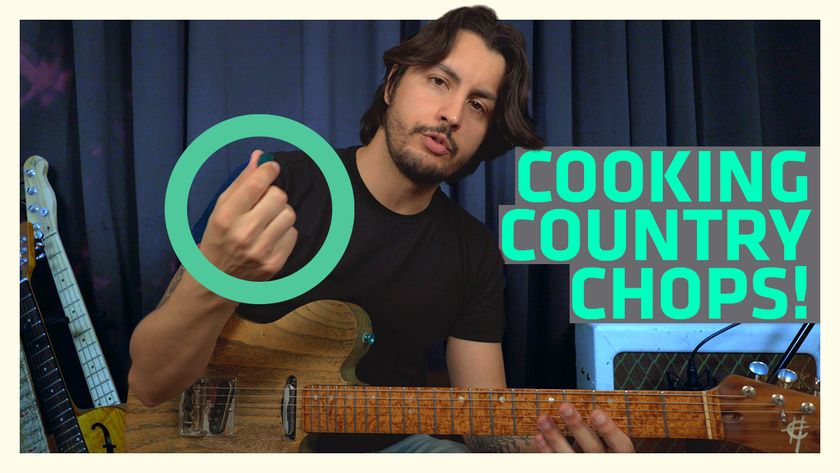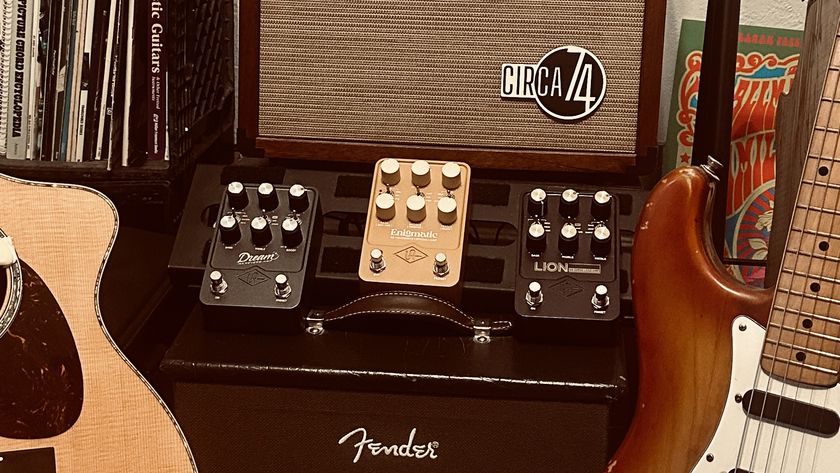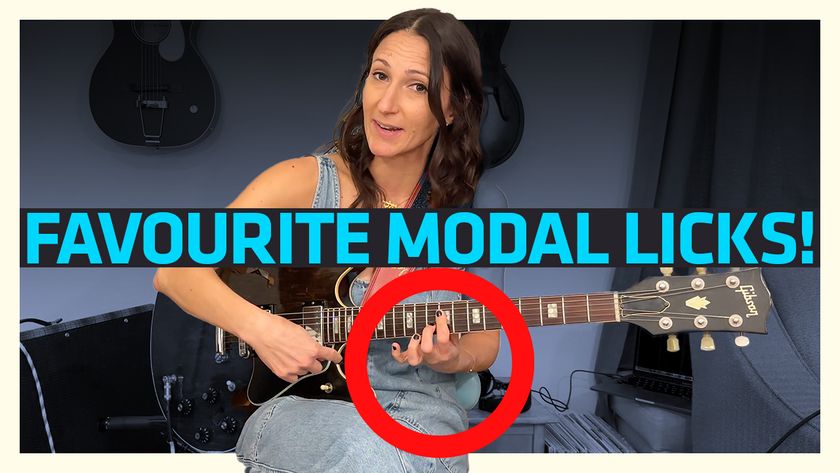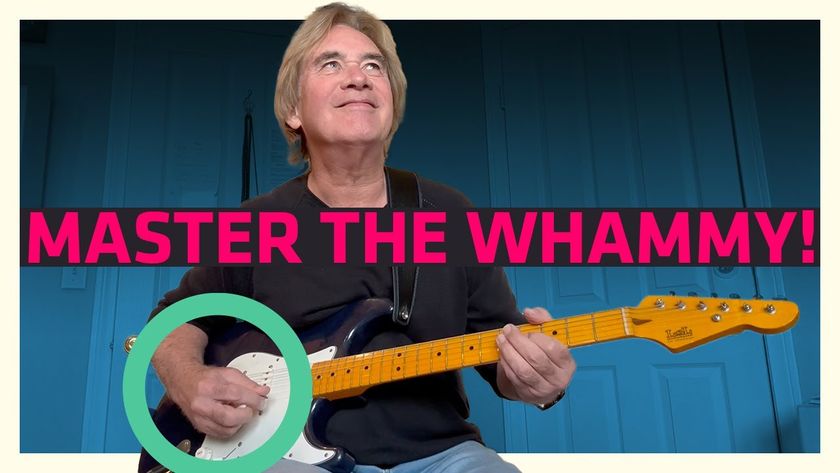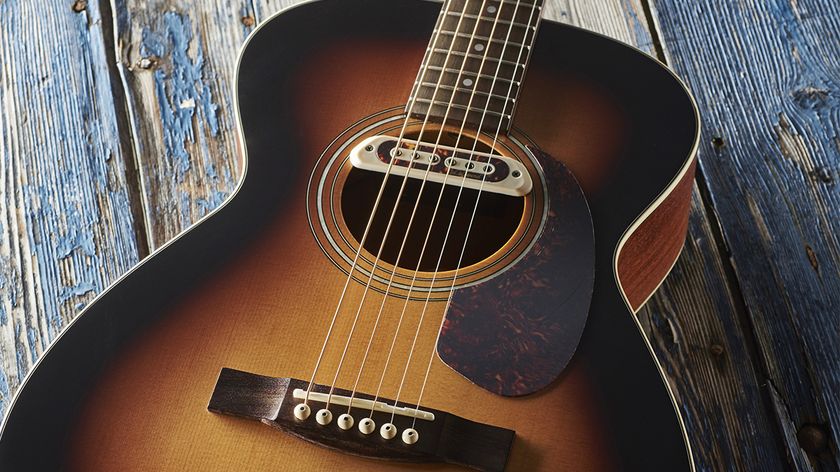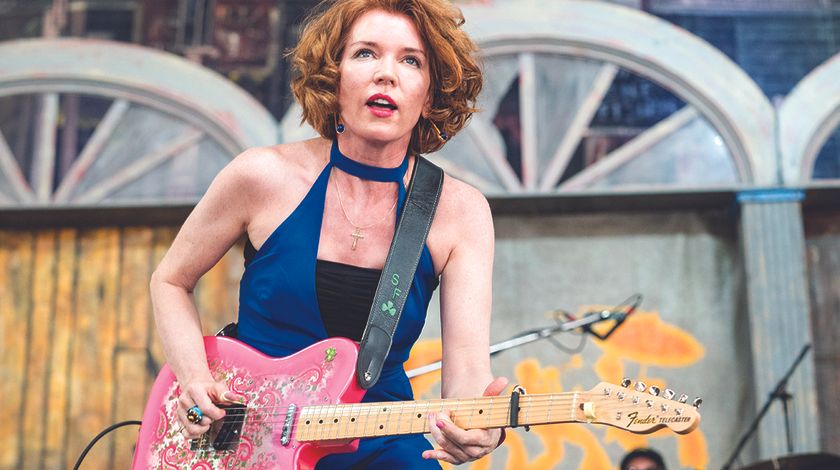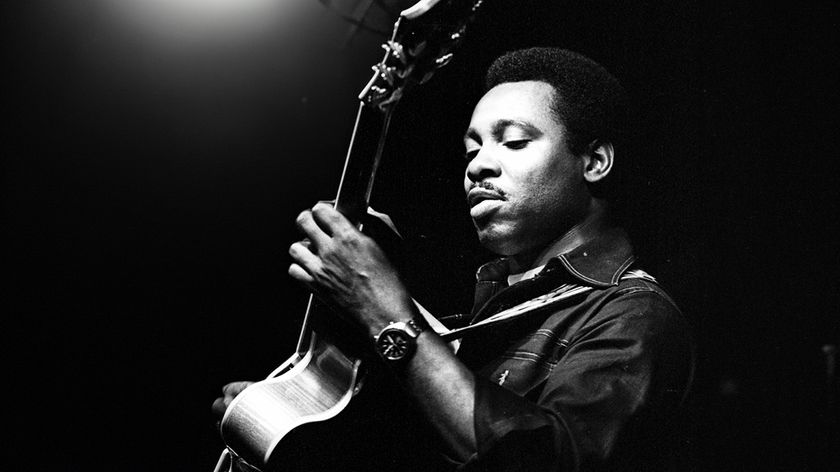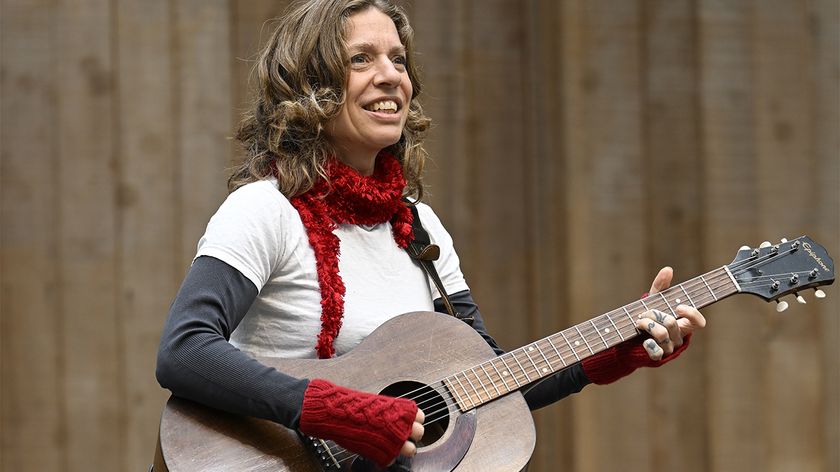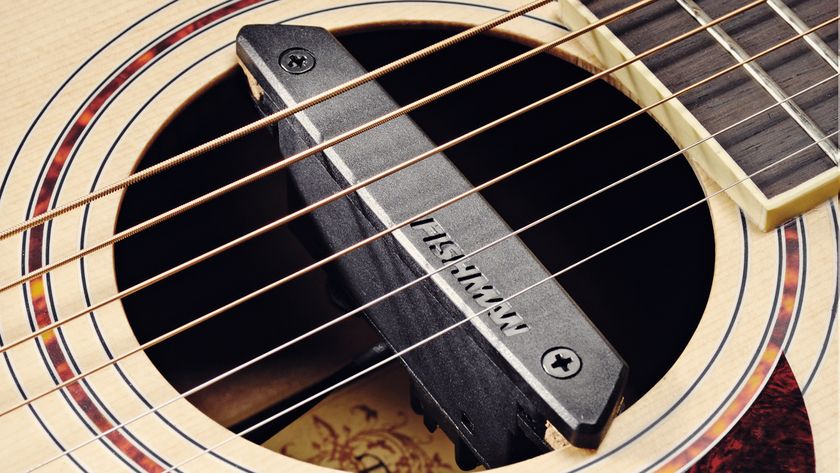How to Play Guitar Like Allan Holdsworth
An accessible guide to the guitar legend’s brilliantly original style
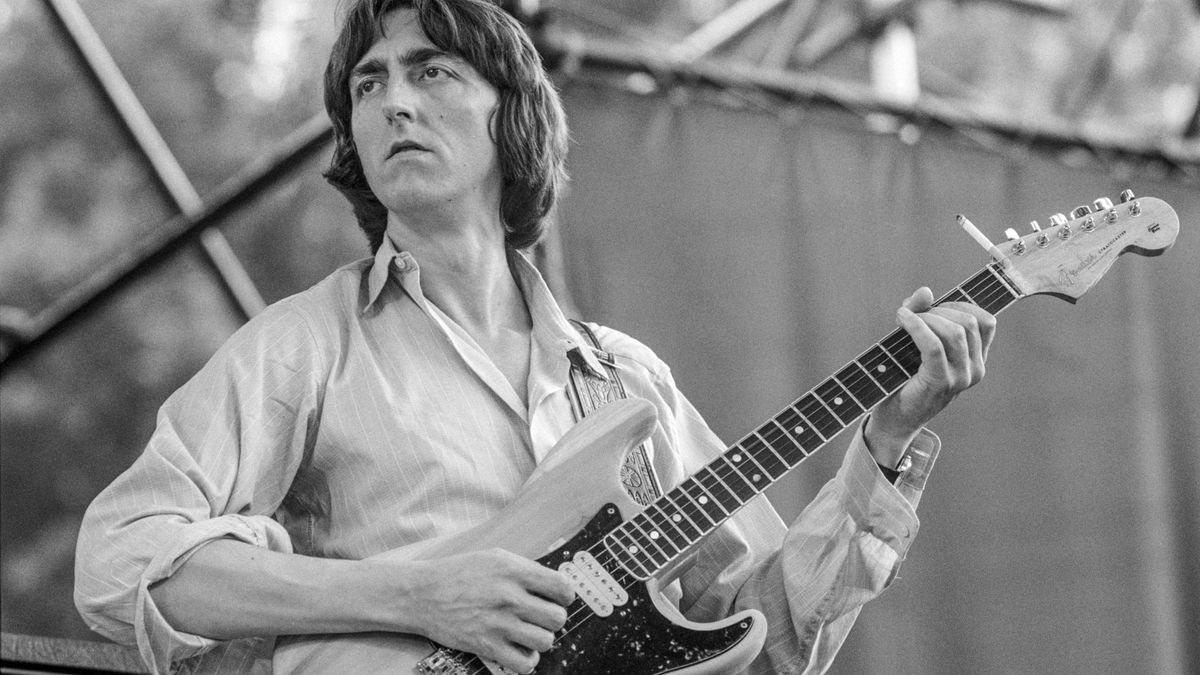
While arguments about who is “the best” in music are generally unhelpful and meaningless, Allan Holdsworth ranks as a guitarist who was among the most universally respected by his fellow players.
He received superlative praise from masters of the guitar of every style, including Frank Zappa (who claimed that Holdsworth “single-handedly reinvented the electric guitar”), Carlos Santana, Joe Satriani, John McLaughlin, Guthrie Govan, George Benson, Tom Morello and especially Eddie Van Halen, who called him “the best, in my book” and helped him land a major-label recording contract.
Despite being an influence and inspiration to so many guitarists, Holdsworth never reached the household-name status of guitarists like Hendrix, Clapton, Beck, Van Halen, Jimmy Page and Brian May, probably due to the challenging nature of his music, as well as misfortune with management and insufficient associations with those who might have helped promote him and his career.
Nevertheless, he was a giant among guitarists, and the music world felt the loss when he died on April 15, 2017, at the age of 70.
Technique Focus: The Major Family
Holdsworth’s most useful scale is very familiar, as it’s related to the major, or “do, re, mi,” scale. However, it is the least crowded way of choosing seven notes from 12, since they’re spread out as far as possible (maximally even is the technical term for such a distribution).
The guitarist tended to name scales from the minor perspective, seeing C major, or C Ionian, as D Dorian, although it’s important to remember that this set of seven notes is also E Phrygian, F Lydian, G Mixolydian, A Aeolian and B Locrian, so we can think of it as the Dorian family, as well as the major family (or Lydian family, and so on, depending on your preferred modal perspective).
Fig. 1 below shows all the fretted notes of this scale laid out in one big interconnected grid moving both up each string and across all six strings in an interconnected web of overlapping positions. I’ve highlighted the C root notes for reference on each string, although Holdsworth preferred instead to visualize this sea of notes oriented around D root notes, from a D Dorian perspective.
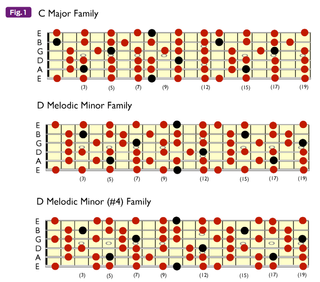
The disparity between the enormous respect he engendered and his lack of commercial success is just one of many contradictions in Holdworth’s world.
A reluctant guitarist (he originally aspired to play the saxophone), he nevertheless mastered and then revolutionized the guitar, not only with his complex chord progressions and use of myriad scale playing techniques but also through his adoption of the SynthAxe guitar synthesizer.
Though laid-back, quiet and unassuming, Holdsworth had the most industrious attitude imaginable when it came to the development of theory, improvisation, rhythm and technique. And while he was largely relegated to playing in pubs and clubs, he performed music that deserved and even demanded sober, full-focused attention.
Technique Focus: Scales
While still a teen, Holdsworth decided not to accept traditional scales but to start again in a way that made sense to him. He discovered what scales could be built from the 12 notes in an octave by writing out every possible combination.
To explain his approach, imagine if we labeled the 12 notes 0 1 2 3 4 5 6 7 8 9 E T. A five-note scale could be 0-1-2-3-4, 0-1-2-3-5 or 0-1-2-3-6, and so on, to create 792 unique scales (there would also be 924 six-note scales, 792 seven-note scales, 495 eight-note scales, etc.). Holdsworth calculated hundreds of scales in his so-called Phonebook from Hell and worked through them, rejecting those that were “too crowded” to find the ones that appealed to him. These scales are used as the basis of his ideas, so we will do the same here, using the conventional naming system.
What’s extraordinary is that Holdsworth didn’t separate the modes and would just use the full range of the guitar for every scale. The root and conventional resting points do not apply, and you can hear this as fluidity in his soloing and chord construction. The scope of this article doesn’t allow an exhaustive analysis, so I’ve just selected two parent scales, C major and D melodic minor, and hinted at others in the examples.
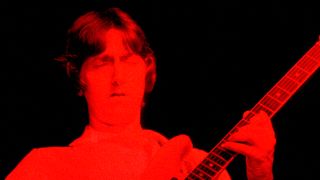
In this article, we intend to give Holdsworth his due by providing an accessible and inspiring introduction to his guitar style and music for those who might feel alienated or even intimidated by his music or the high level of technical expertise required to play it. You’ll receive a crash-course overview and, hopefully, a fresh perspective of the guitarist’s theoretical and musical ideas that will provide a deeper understanding beyond what you can get from just analyzing transcriptions and technical exercises.
I’ve structured this presentation by scale type and created some progressive studies based on each one. In this first part of our lesson, we’ll look at examples in the family of relative modes based on the parent C major scale (C, D, E, F, G, A, B), with an orientation primarily around F Lydian (F, A, B, C, D, E) and D Dorian (D, E, F, G, A, B, C), as well as Holdsworth’s inventive chord voicings and use of intervals.
Let’s get to grips with the C major scale by using one of Holdsworth’s radical fingering approaches: four notes per string. Rather than running seven-note scales and modes in position, using only two or three notes per string, the guitarist preferred a fluid “saxophone-like” sound with an extended pitch range.
To achieve this, he learned to play his scales with wide-spanning four-notes-per-string fingerings, as demonstrated in the extended-range exercise shown in Ex. 1. You can play this with all four individual fingers of your fretting hand or incorporate position shifts (which you may need in the lower positions, or perhaps all), via finger slides with the pinkie on the way up, and with the index finger when descending. Go with whatever finger approach works best for you and your hand.
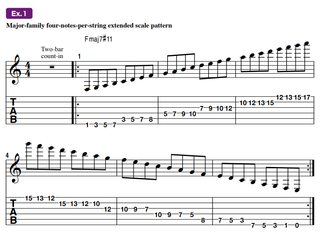
Ex. 2 is a lateral string-skipping exercise that uses diatonic (scale-based) 7th intervals. Holdsworth had an incredibly fluid approach to playing that worked in conjunction with his amazing command of the fretboard.
To develop this level of skill, it’s important to investigate the scale in a number of different ways. The lateral approach shown here, which uses wide intervals, avoids octaves and triadic forms, is typical of his style.
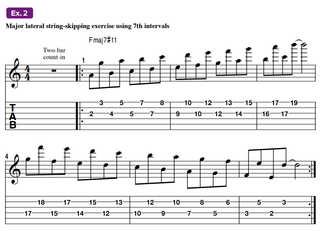
Holdsworth advocated “letting your eyes dance over the scale,” rather than relying on muscle memory. Ex. 3 demonstrates a more sporadic approach that uses a string-skipping pattern to help you absorb the scale, rather than doing so by learning a lick.
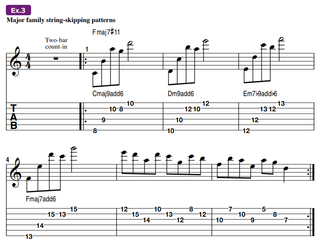
The guitarist also saw chords and melodies emerging from scale forms, but he disliked the sound of conventional voicings and rarely used octave-double notes. Even when playing a so-called normal chord, he voiced it with either clusters (major and minor 2nds) or wide intervals greater than a 5th, giving his voicings an ethereal quality.
Ex. 4 shows one of his extra-wide open chord voicings for Cmaj7, moved up the scale and fretboard diatonically to generate the complete set of diatonic seventh chords for the C major scale and all of its modes: C Ionian, D Dorian, E Phrygian, F Lydian, G Mixolydian, A Aeolian and B Locrian.
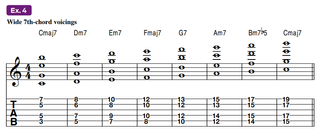
Holdsworth usually avoided chords that were built conventionally, in stacked 3rds, and preferred non-tertial voicings, which do not include any 3rds. (Tertial is derived from the Latin, terminus, meaning third.) His preferred voicings of triads, 7th chords and 9th chords would often either add or omit notes and include unexpected bass notes. In general, most of his chord voicings would have four notes, with no octave doubling. This creates very beautiful and sophisticated results, even within one scale family.
Ex. 5 illustrates a Holdsworth-style non-tertial voicing structure played through the C major scale. You’ll notice that the third chord, Esusb2/A, requires quite a wide fret-hand stretch, so be sure to ease into this “pretzel-finger” shape, and only try doing so when your hands are properly warmed and limbered up.
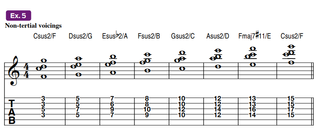
Ex. 6 offers another demonstration of a Holdsworth-like non-tertial voicing played through the C major scale. The final chord is particularly stretchy, so be careful. By the way, Holdsworth had large hands that were accustomed to such wide stretches. He also used light-gauge strings, which makes fretting chords easier.

Of course, Holdsworth used many different unusual and inventive chord voicings. Ex. 7 presents a select few, again sourced from our parent C major scale.
Not content with what was possible with just one fretting hand, the visionary guitarist occasionally added notes to chords using fret-hand taps, creating ultra-wide voicings, as in the final bar of this example. I’ll leave it to you to experiment with harmonizing each of these voicings through the scale diatonically, or inventing your own voicings.
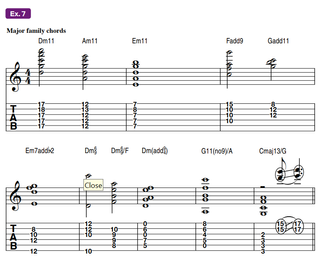
Get The Pick Newsletter
All the latest guitar news, interviews, lessons, reviews, deals and more, direct to your inbox!

"It’s like you’re making a statement. And you never know where it’ll lead." Pete Thorn shares the tip that convinced Joe Satriani he was the right guitarist for the SatchVai Band

"This is something you could actually improvise with!" Add vibrant rhythms and sophisticated chords to your guitar playing with Jesse Cook’s five essential flamenco techniques

